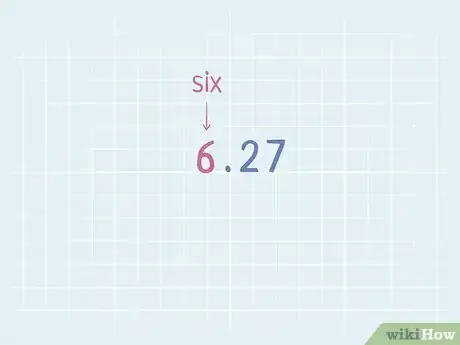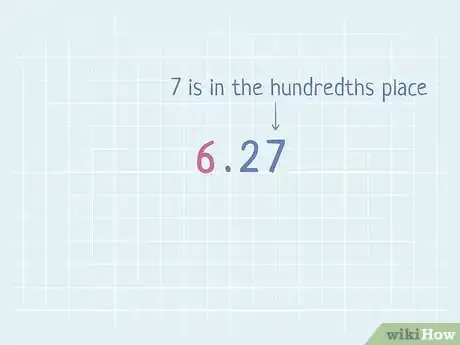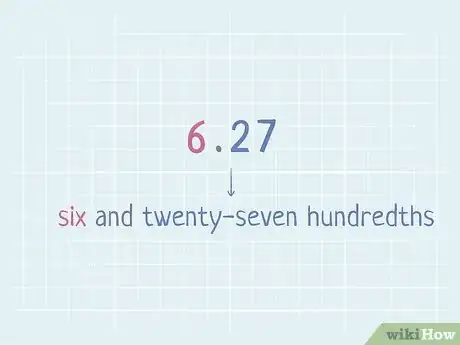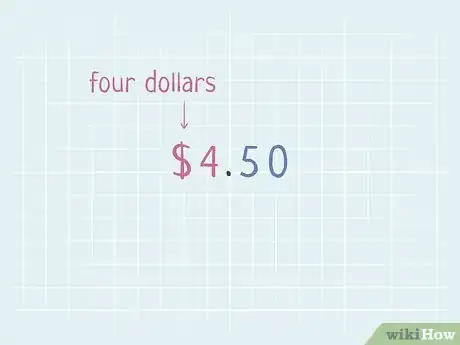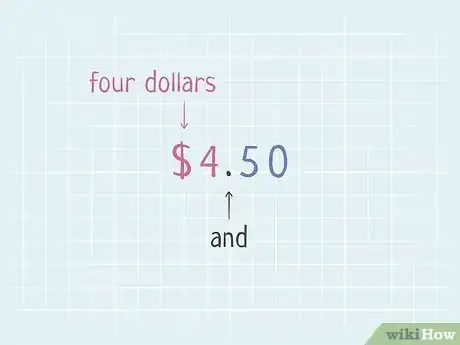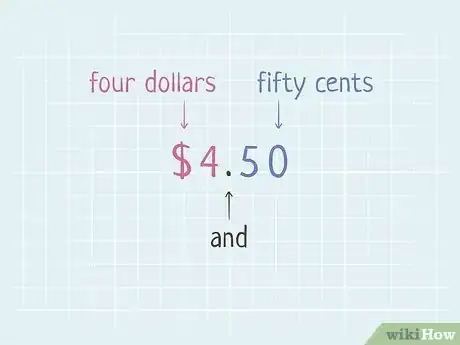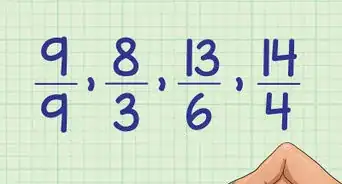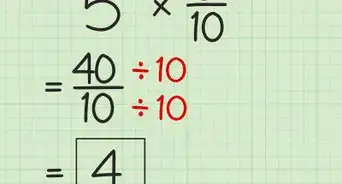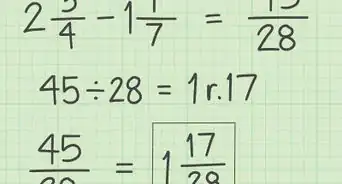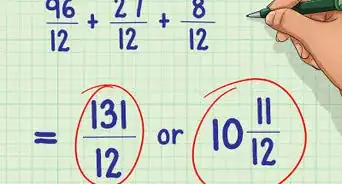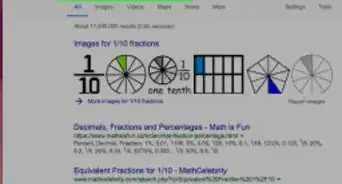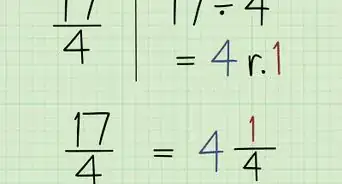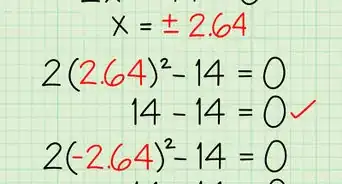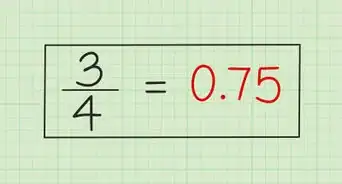This article was co-authored by wikiHow staff writer, Hannah Madden. Hannah Madden is a writer, editor, and artist currently living in Portland, Oregon. In 2018, she graduated from Portland State University with a B.S. in Environmental Studies. Hannah enjoys writing articles about conservation, sustainability, and eco-friendly products. When she isn’t writing, you can find Hannah working on hand embroidery projects and listening to music.
This article has been viewed 67,370 times.
Learn more...
A decimal number is anything less than 1 that is not expressed by a fraction. Decimal points express the differentiation between the whole number and the less than whole number. If you are learning about decimal numbers and are having trouble reading them, say the whole number first, note where the decimal point is, and follow up with the numbers after the point to understand decimal numbers every time.
Steps
Reading Decimal Numbers in Math
-
1Say the number before the decimal point first. Decimal numbers are read left to right, just like normal numbers. Always start with the number that is to the left of the decimal place. This is the “whole” number. If there is no number before the decimal point, just say “zero.”[1]
- For example, if the number is 6.27, start by saying “six.”
Tip: If there is a zero in front of the decimal point, some people may skip saying “zero” all together and just go straight into saying “point” for the decimal point.
-
2Read “and” as the decimal point. The period, or decimal point, in the number can simply be read as “and.” Say the decimal directly after the number that is in front of it, or else it can get confusing. The decimal point determines which numbers are whole numbers and which numbers are not.[2]
- For example, if the number is 6.27, you’d say “six and-”
- Some people may say “point” for the decimal point instead of “and,” especially outside of a math class.
Advertisement -
3Identify which place the last number is in after the decimal. It is important to be accurate when you are describing numbers in math. Determine which place the last number after the decimal is in by counting how many digits to the right of the decimal a number is. Then, add a 0 for each digit to the right.[3] Common decimal numbers end in the tenths, hundredths, or thousandths.[4]
- For example, In the number 6.2, 2 is in the tenths place.
- In the number 6.27, 7 is in the hundredths place.
- In the number 6.275, 5 is in the thousandths place.
-
4Say the number after the decimal and add its numerical place to it. The number after the decimal has to be precise. Once you figure out what place the number is in, add that onto the number that you say after the decimal. This will make the decimal sound like a fraction, and it will be easier to work into equations in the future.[5]
- For example, if the number is 6.2, say “six and two tenths.”
- If the number is 6.27, say “six and twenty-seven hundredths.”
- If the number is 6.275, say “six and two hundred seventy-five thousandths.”
- If you are not doing a math equation, you can just read each number individually. For example, if your number is 6.27, say “six point two seven.”
Reading Monetary Decimal Numbers
-
1Say the number before the decimal point and “dollars.” It is important to note that you are talking about money when you first read it out. As you begin reading from left to right, say the number that is before the decimal point followed by the type of money you are using.[6]
- For example, if the number is $4.50, start by saying “four dollars-”
-
2Say “and” as the decimal point. When talking about money, the numbers after the decimal point are an addition to the number before the decimal point. When you are talking about money, say “and” when you see a decimal point like you would with a regular decimal number.[7]
- For example, if the number is $4.50, say “four dollars and-”
-
3Read the number after the decimal point and say “cents.” The numbers after the decimal point describe the amount of money that doesn’t make up a full dollar. Read the number after the decimal point as a whole number on its own. Say “cents” after the word to distinguish it from the first number.[8]
- For example, if the number is $4.50, say “four dollars and fifty cents.”
- If the number is $39.89, say “thirty-nine dollars and eighty-nine cents.”
Tip: Cents can only go to the hundredths place, not above or below it. For example, the number $2.01 is two dollars and one cent.
References
- ↑ https://www.coolmath.com/prealgebra/02-decimals/02-decimals-reading-02
- ↑ https://www.coolmath.com/prealgebra/02-decimals/02-decimals-reading-02
- ↑ https://sciencing.com/read-decimal-place-value-7533635.html
- ↑ https://www.themathpage.com/Arith/decimals-2.htm
- ↑ https://www.themathpage.com/Arith/decimals-2.htm
- ↑ https://www.coolmath.com/prealgebra/02-decimals/02-decimals-reading-02
- ↑ https://www.themathpage.com/Arith/decimals-2.htm
- ↑ https://edu.gcfglobal.org/en/decimals/introduction-to-decimals/1/
